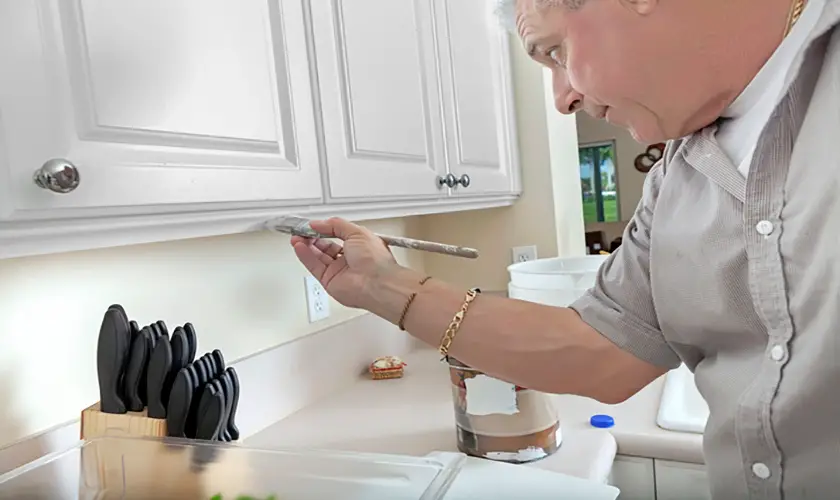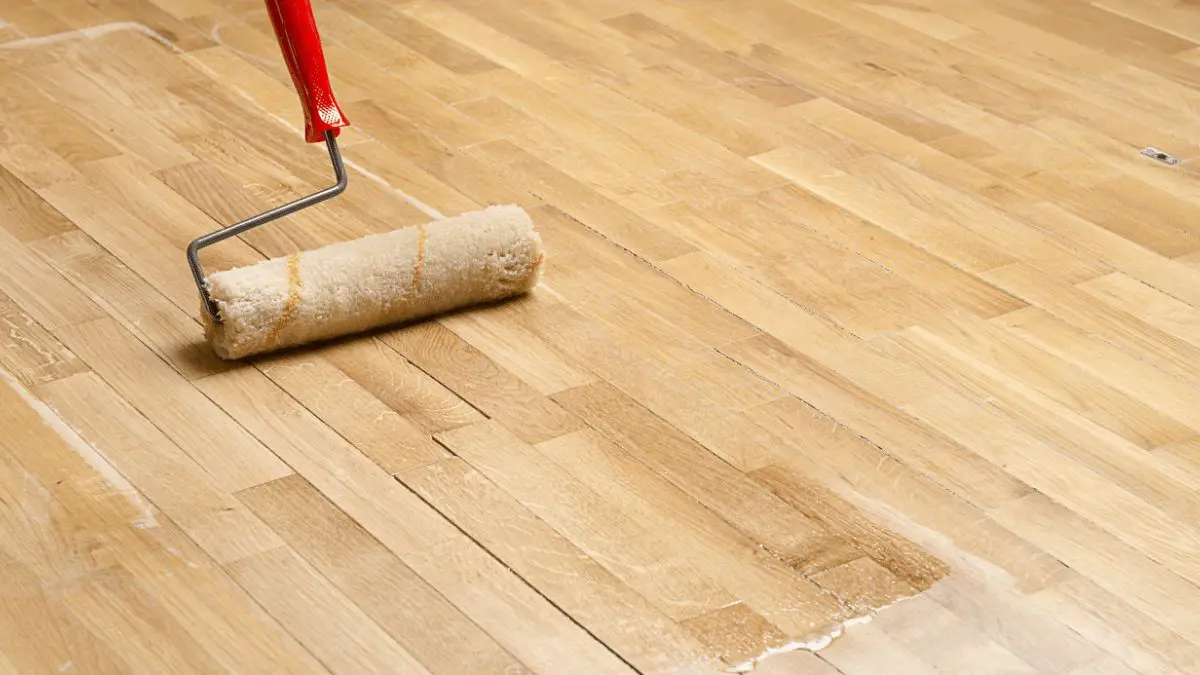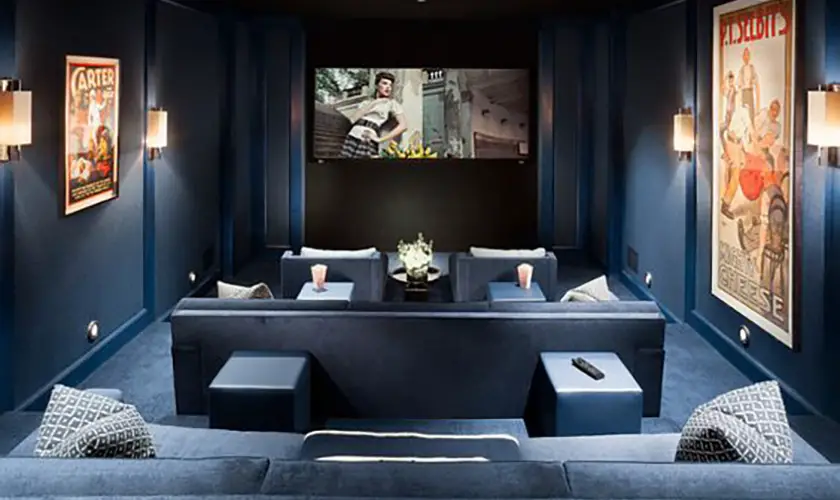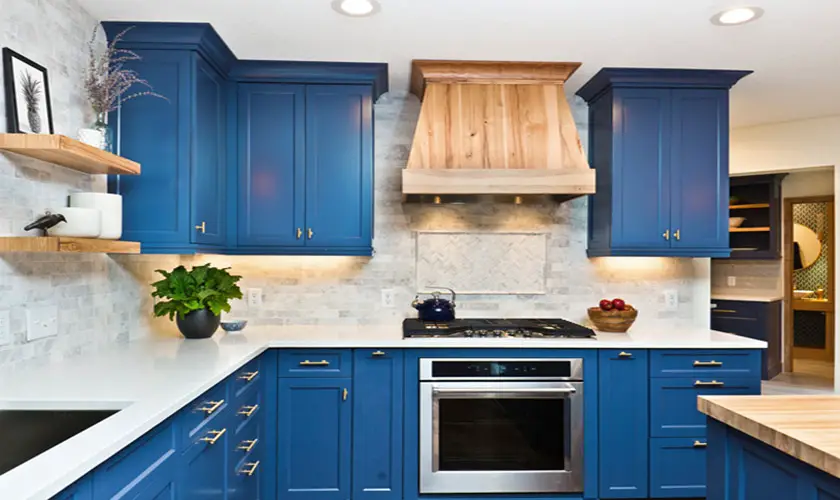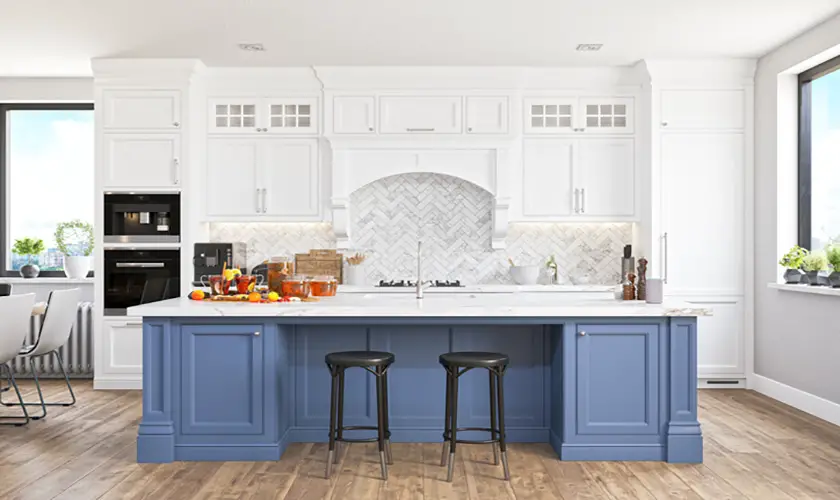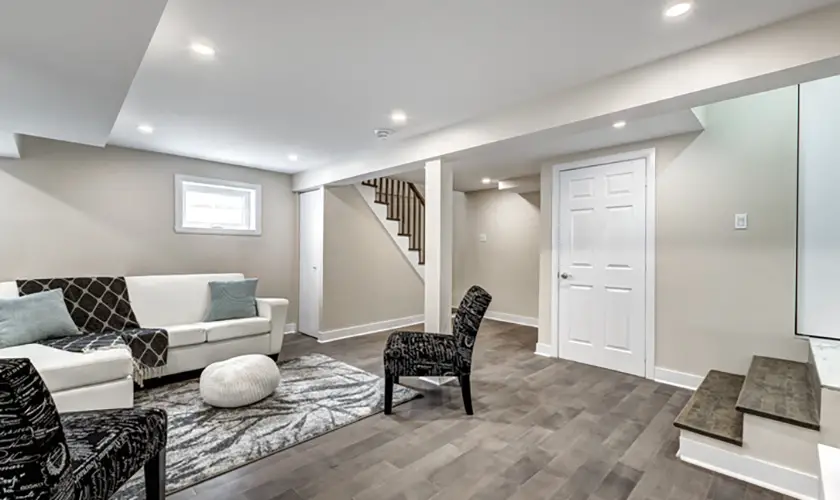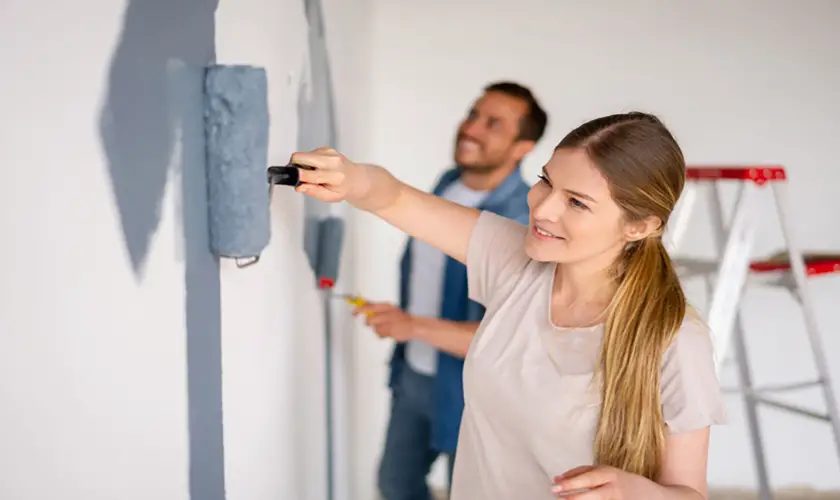
Light reflectance value (LRV) measures how much light a color absorbs or reflects. It is expressed as a percentage and can be used to compare the brightness of a color. We will discuss the importance of light reflectance value testing in exterior and interior paint. We will also provide tips on choosing the right paint for your project!
Light reflectance value, or LRV, is expressed as a percentage, ranging from 0% being absolute black to 100% being pure white. The higher the LRV, the more usable light a color reflects and the brighter the area appears. The color’s LRV measurement indicates the amount of usable light a color absorbs.
Essentially, the whitest whites are closer to 100%, whereas the darkest blacks are closer to 0%.

What is Light Reflectance Value (LRV)?
Light reflectance value paint is very important when painting the exterior of a building.
High LRV number paints can help keep buildings cool by reflecting light and heat away from them, reducing air-conditioning costs. Low LRV number paints absorb light and heat, making it difficult to keep the building at a comfortable temperature if poorly insulated.
Light reflectance value is also important for painting a building’s interior. High LRV paints respect the brightest whites, which will brighten a room. In contrast, low LRV paints absorb all usable natural or artificial lighting to create a darker atmosphere.
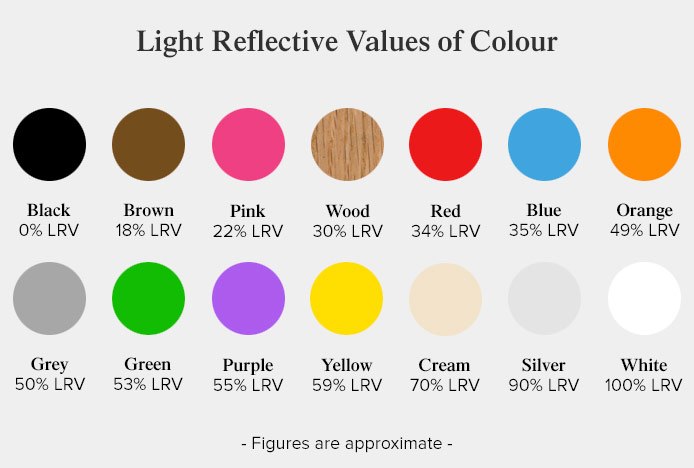
Choosing the Right Paint LRV for Your Project
When choosing the right paint for a project, the light reflective value should be considered. A higher LRV will make for a light and bright room, while a lower LRV will create a more subdued atmosphere.
LRV and Interior Paint
Higher LRVs are best for brightening up dark rooms and creating spaces that look larger than they are. According to interior designers, if you have small rooms or minimal natural light sources, lighter colors with high LRVs are a good choice.
For interior walls, light colors with high LRV values will brighten a room, while darker colors with lower LRV values can create a more subdued and cozy atmosphere.
Perfect neutrals are medium-toned paint colors that absorb some but not all lighting. Examples include dining rooms, bedrooms, and family rooms.
On the other hand, lower light reflectance values create more subdued and cozy atmospheres that absorb light rather than reflect it. Darker paint color can make rooms look smaller but also add drama, which is akene to a darker room such as a media room, bedroom, or any room where dark color palettes are welcoming.
LRV and Exterior Paint
LRV is especially important when selecting exterior paint. This is because light reflectivity affects how much heat and light a painted surface will absorb from the sun. A higher light reflectance value allows your home to stay cooler in the summer, while a lower LRV can result in more heat absorption.
When selecting exterior paint, consider how light reflectance value can affect temperature and air conditioning costs in the summer months. Higher LRV paints will help keep your home cooler, which can result in lower energy bills.
Darker colors may look stunning but can also present problems with light reflectance. Light colors are more reflective and, therefore, better suited for sunnier climates, while darker colors may be a better choice in cooler areas.
Darker colors with lower LRV paints can absorb light and heat, making them ideal for areas that need additional warmth. Darker colors on exterior walls can accentuate landscaping or architectural features.
Dark colors like black, brown, and some grays can make a room feel smaller. Therefore, light colors with higher light reflectance values are often recommended for smaller spaces such as bathrooms and kitchens.
Dark exterior colors can make a house look smaller, while light colors with higher light reflectance values can make a house look larger. Many architects and color consultants will use light paint on one-story homes and dark paint on two-story homes.
Darker colors also make for a good contrasting color choice for trim and accents.
Light colors with higher LRV values are generally best for exterior walls to keep the building cool and reduce air conditioning costs.
For exterior walls, light colors can also reflect light and heat away from exterior walls, helping reduce color fading and UV damage from the sun.
LRV and Surface Imperfections
The LRV of paint also affects how well a surface will hide imperfections on walls and ceilings. Darker paints with low light reflectance values are better at hiding blemishes, while light colors may highlight imperfections.
When painting a surface with imperfections or cracks, it’s best to use paint with a lower LRV. This will help reduce the appearance of blemishes and give the walls an even finish.
LRV and Paint Durability
Another factor to take into account is colorfastness. Some light colors are more prone to fading over time due to their light reflectance values, so be aware of any warranties or guarantees that come with the paint you choose.
Darker exterior paints can fade faster in direct sunlight. But they can also be more durable and last longer than light colors. In interior paint, the LRV has little bearing on the paint’s durability.
The LRV, or light reflective value, isn’t the best barometer for paint durability. Even though dark colors may fade faster when exposed to direct sunlight, premium paint will usually last longer than low-quality paint, regardless of the color. Additionally, it is important to remember that surface preparation and application are key factors.
Does the Paint Finish Affect a Paint’s LRV?
The paint finish does change the paint color’s ability to absorb or reflect light. It can, however, change the way a color is perceived.
Most people don’t realize that glossy reflective surfaces don’t affect a color’s ability to reflect or absorb light. The higher gloss surface doesn’t help better spread light throughout a space. It’s merely a glare that can change how your eye perceives the color.
A surface has to be very smooth to reflect enough light beams to provide significant lighting contribution in a room. The light you see bouncing off walls or glossy surfaces are glare spots.
As light beams diffuse and scatter across the wall surface evenly into thin air – it doesn’t even have a chance of reflecting into the room as useable light.
Paint experts will tell you that adding a sheen to your paint changes the color, making it appear darker.
If you want to know how a paint color would look in gloss, painters will often place Scotch or packing tape over the color sample. The light reflection will tell you how bright the color area would appear when painted with a gloss or semi-gloss finish.
Can You Increase LRV in Paint?
Since the light reflectance value of a color cannot be changed, any attempts to increase the LRV will also alter the color. To increase the LRV, you’d need to mix white paint (or a lighter paint) with the existing paint color, which will alter the paint hue by lightening it.
There’s no feasible way to control this. Add too much, and you’ll add dark paint to the mix. It’s frustrating and often not worth the effort if lightening the paint color is your goal.
We recommend using large peel-and-stick paint samples in several color shades to find the one that best suits you.
Other LRV FAQs
What is a good range for LRV in paint?
A good LRV range is between 35 and 70. A higher LRV should be used in darker rooms to help brighten the space, and a lower value in brighter spaces to create a more cozy atmosphere.
Can LRV be used to determine paint durability?
Light reflectance values alone do not determine the durability of any paint. Factors such as formula, environment, surface preparation, and application process play a more important role in determining the durability of any paint.
Does LRV change over time?
No, LRV does not change over time. The color may fade or darken due to sun exposure, but the light reflectance value will remain unchanged.
Do LRV values differ between paint brands?
Yes, although most major paint brands have similar LRV ranges. While slight variations do occur, they’re typically insignificant. If you’re unsure, it’s best to check with the manufacturer.
Is there a standard light reflectance value for light colors?
No, light colors can range anywhere from 60-100%, depending on the hue and tint of the paint color.
Is light reflectance value the same thing as gloss level?
No, light reflectance value (LRV) measures how much light is reflected or absorbed by a given paint color, while gloss level refers to the amount of light that reflects off a painted surface in a glossy manner.
Conclusion
It’s important to consider light reflectance value when selecting paint for any project, as it can greatly affect the look and feel of the finished space. With light reflectance value in mind, you can ensure that your project looks its best and performs optimally.
In conclusion, light reflectance value is an important measurement to consider when selecting paint for a project. High light reflectance values can help keep buildings cool, while low light reflectance values can create a darker atmosphere. Light reflectance value should always be considered when choosing the right paint for your project. Careful planning will ensure that the project looks its best.


